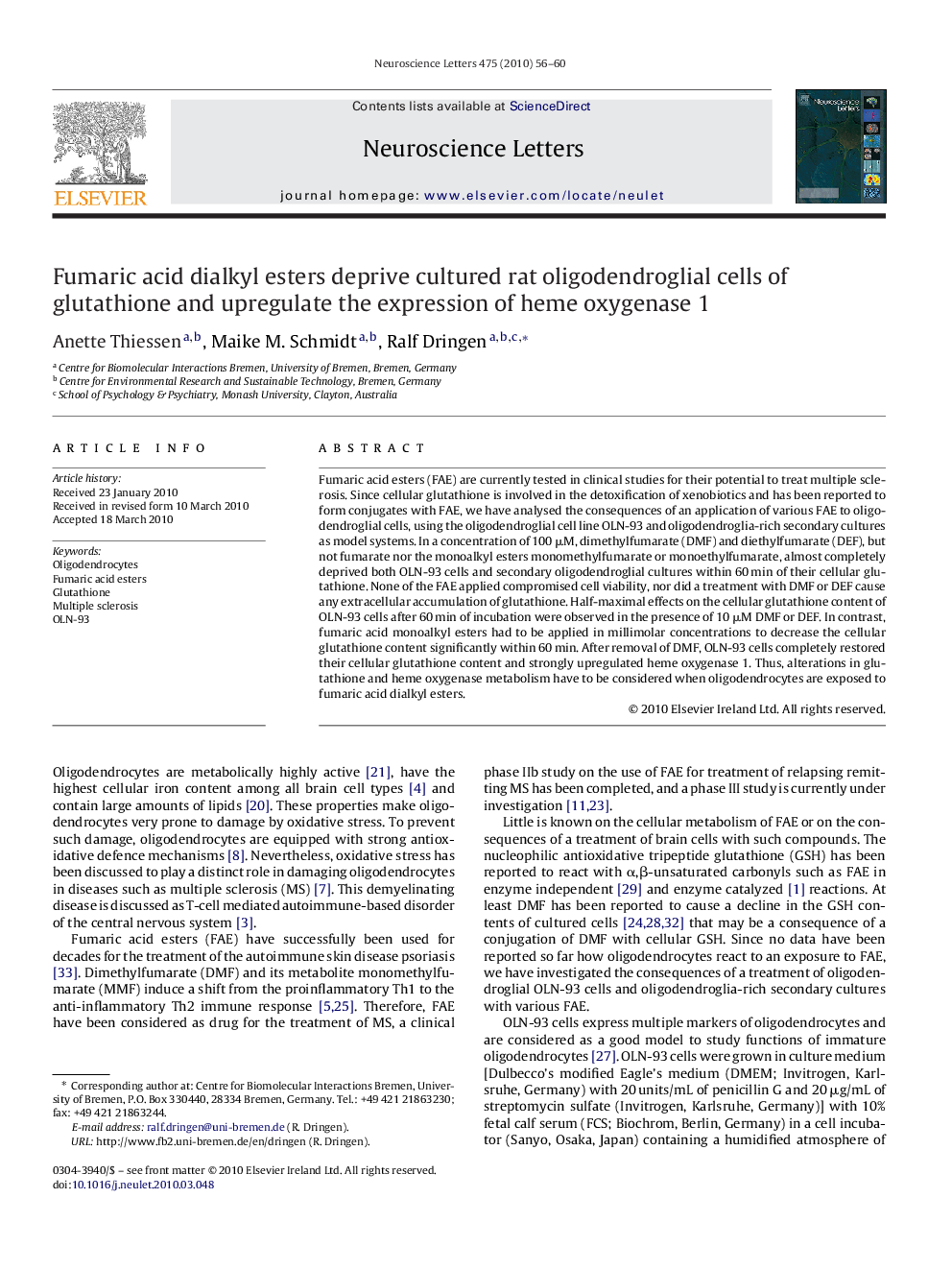| Article ID | Journal | Published Year | Pages | File Type |
|---|---|---|---|---|
| 4346305 | Neuroscience Letters | 2010 | 5 Pages |
Abstract
Fumaric acid esters (FAE) are currently tested in clinical studies for their potential to treat multiple sclerosis. Since cellular glutathione is involved in the detoxification of xenobiotics and has been reported to form conjugates with FAE, we have analysed the consequences of an application of various FAE to oligodendroglial cells, using the oligodendroglial cell line OLN-93 and oligodendroglia-rich secondary cultures as model systems. In a concentration of 100 μM, dimethylfumarate (DMF) and diethylfumarate (DEF), but not fumarate nor the monoalkyl esters monomethylfumarate or monoethylfumarate, almost completely deprived both OLN-93 cells and secondary oligodendroglial cultures within 60 min of their cellular glutathione. None of the FAE applied compromised cell viability, nor did a treatment with DMF or DEF cause any extracellular accumulation of glutathione. Half-maximal effects on the cellular glutathione content of OLN-93 cells after 60 min of incubation were observed in the presence of 10 μM DMF or DEF. In contrast, fumaric acid monoalkyl esters had to be applied in millimolar concentrations to decrease the cellular glutathione content significantly within 60 min. After removal of DMF, OLN-93 cells completely restored their cellular glutathione content and strongly upregulated heme oxygenase 1. Thus, alterations in glutathione and heme oxygenase metabolism have to be considered when oligodendrocytes are exposed to fumaric acid dialkyl esters.
Related Topics
Life Sciences
Neuroscience
Neuroscience (General)
Authors
Anette Thiessen, Maike M. Schmidt, Ralf Dringen,
